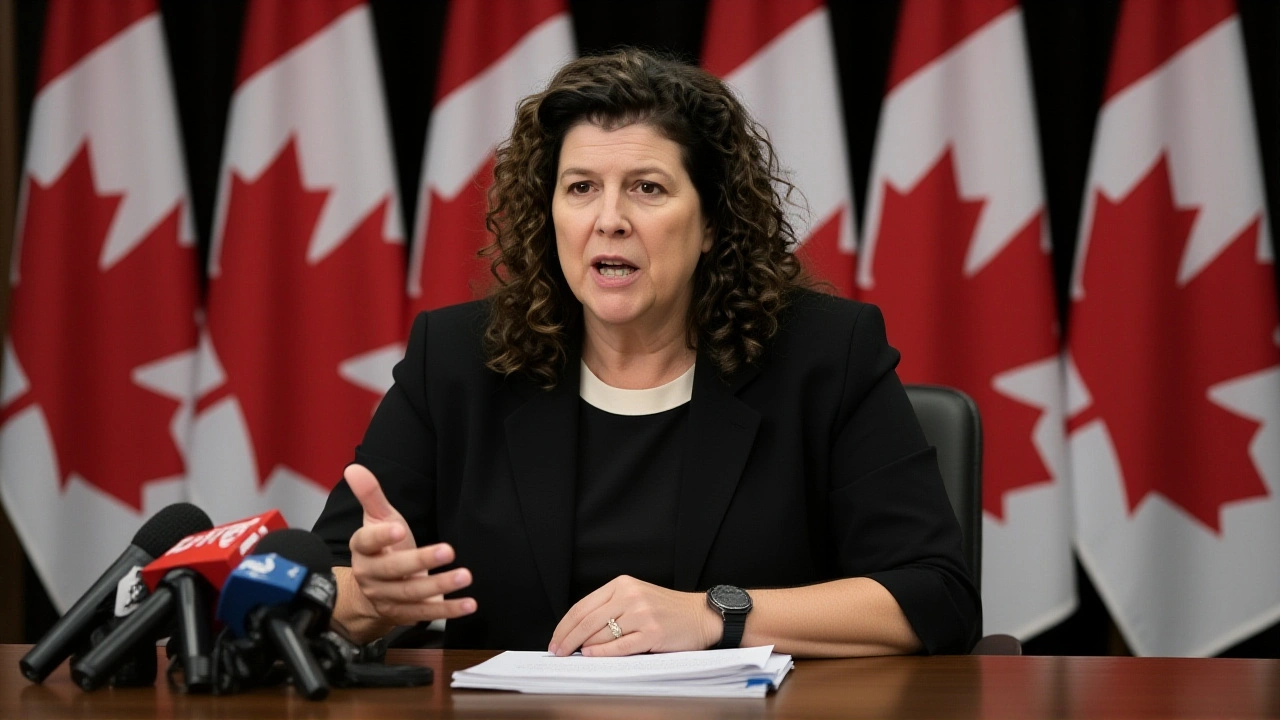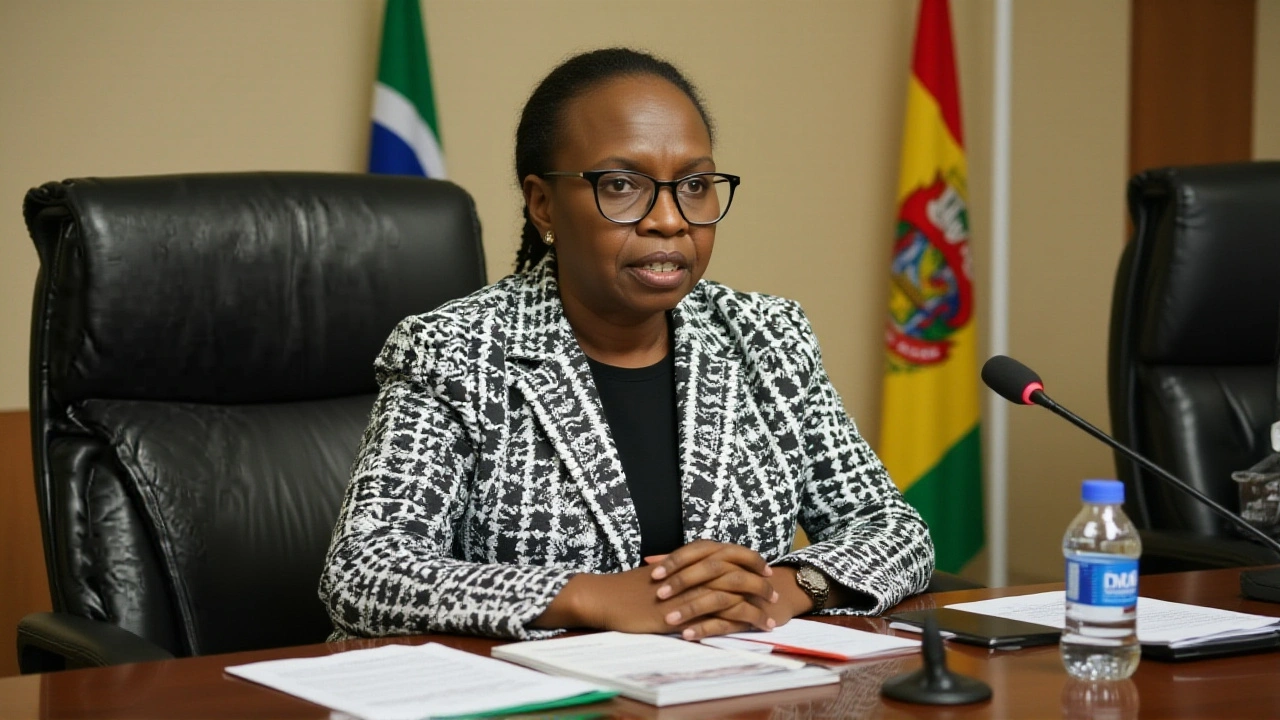1 Oct 2025
- 10 Comments
When Nancy Gathungu, the Auditor General of Kenya released her FY 2024 audit, the numbers on the KPA board’s tab came as a shock: a whopping Sh109.5 million in directors' allowances that couldn’t be verified.
The audit covered the financial year that ended on . It revealed that the Kenya Ports Authority (KPA), the state‑run body that runs the country’s lifeline seaports, had inflated its board expenses well beyond what the law permits. The excess wasn’t just a little over the limit – it blew past the ceiling by more than 265 %.
Background and the regulatory ceiling
KPA’s board is supposed to keep its spending under the cap set by Government Circular No OP/CAB.9/1A, dated . The circular says board expenses can’t exceed Sh30 million or 5 % of the operations‑and‑maintenance budget – whichever is lower. In plain English, the ceiling is meant to stop a state corporation from blowing its budget on perks.
What makes the KPA case stand out is that the board never got the required approval from the Cabinet Secretary for Transport. Without that green light, any spend over the limit is essentially off‑the‑books.
Audit findings: the directors' allowances
The audit report showed that administrative costs on the profit‑and‑loss statement totalled Sh5.8 billion, with the contested directors' allowances accounting for Sh109.5 million. Of that, an unsettling directors' allowances figure of Sh45.4 million lacked any receipts, travel itineraries, or even a simple schedule showing who got paid for what.
In the words of Gathungu, “The accuracy and validity of Sh109.5 million directors' allowances could not be confirmed.” That single sentence underlines a deeper problem: the authority could not produce a payment ledger that linked each director to a specific meeting or activity. Imagine trying to prove you paid a consultant without a contract or invoice – that’s the sort of gap we’re looking at.
To put the numbers in perspective, the allowances represent roughly 1.9 % of KPA’s total revenue for the year, a slice that should have been easy to trace but turned out to be a black hole.
Other financial irregularities uncovered
Beyond the directors' allowances, the audit highlighted two more red flags. First, staff receivables sat at Sh95.95 million, including an unsurrendered daily subsistence allowance of Sh52.1 million. That suggests employees were either over‑paid or never reclaimed what they were owed.
Second, former managing director John Mwangemi received benefits worth Sh9 million while serving in an acting capacity since . The audit could not verify whether those benefits were justified under his acting role.
Reactions from stakeholders
When the report leaked to the press, opposition MPs in Nairobi immediately called for a parliamentary committee to probe KPA’s governance. “We cannot let a strategic port authority operate in a vacuum,” one lawmaker said.
The KPA chairman, James Mwangi, defended the board, claiming the allowances were “standard remuneration for board members who travel frequently to Mombasa and abroad.” He promised a “full internal review” but offered no timeline.
Industry experts warn that the lack of transparent spending could deter foreign investors. "Port users expect a clean, accountable operator,” said Dr. Aisha Njeri, a maritime economist at the University of Nairobi. “Any hint of fiscal mismanagement ripples through the entire logistics chain.”
Implications for Kenya’s port sector
KPA handles over 90 % of Kenya’s import‑export cargo, so any governance glitch can affect everything from tea shipments to automobile imports. If the board’s spending continues unchecked, the authority may face tighter supervision from the Treasury, possibly leading to a freeze on future capital projects.
Moreover, the audit could set a precedent for other state corporations. The audit office has already flagged similar lapses at the Kenya Electricity Generating Company (KenGen) and the National Hospital Insurance Fund (NHIF). A pattern is emerging: state entities are pushing the limits of fiscal discipline, and the Auditor General is ready to call them out.
Next steps and recommendations
Gathungu’s report recommends three immediate actions:
- Recover the Sh45.4 million that lacks supporting documentation, or return it to the consolidated fund.
- Institute a mandatory board‑expense approval workflow that includes the Cabinet Secretary’s signature for any spend above the Sh30 million threshold.
- Conduct a forensic audit of staff receivables and the acting MD’s benefits to determine if any amounts should be reclaimed.
Implementation will be overseen by the Office of the Director of Public Prosecutions (ODPP) if any criminal conduct is uncovered. Meanwhile, KPA has pledged to publish a detailed schedule of directors’ payments by the end of the month, aiming to restore confidence among stakeholders.

Frequently Asked Questions
Why does the circular limit board expenses to Sh30 million?
The limit is designed to prevent state corporations from funneling public money into non‑essential perks. By capping board expenses, the government ensures that most of the budget goes toward core operations and service delivery.
Who is responsible for approving board expenses over the limit?
Any board spend that exceeds the Sh30 million ceiling must be signed off by the relevant Cabinet Secretary – in KPA’s case, the Cabinet Secretary for Transport – before the money can be disbursed.
What could happen to the directors who received the unverified allowances?
If investigations show the allowances were improperly paid, directors could be required to repay the amounts and may face disciplinary action, including removal from the board or even criminal charges for abuse of public funds.
How does this audit affect Kenya’s trade through the ports?
While the audit itself doesn’t halt cargo movements, lingering doubts about KPA’s governance could delay new infrastructure investments, potentially raising port fees and slowing turnaround times for importers and exporters.
What are the next deadlines for KPA to address the audit findings?
KPA has committed to releasing a full payment schedule for directors by the end of October 2025. The Auditor General expects a follow‑up audit in the first quarter of 2026 to verify compliance with the recommended corrective actions.


Kiran Singh
October 1, 2025Wow, this audit really shines a light on the need for stricter oversight at KPA. 👍 It’s a reminder that transparency isn’t just a buzzword-it protects the public’s money. Let’s hope the follow‑up actions actually happen and not just sit on a shelf. Keep the pressure on, folks! 🚀
Balaji Srinivasan
October 10, 2025Proper checks could have prevented this costly oversight.
Hariprasath P
October 20, 2025Honestly, the whole thing reeks of bureaucratic laziness, like they forgot 2+2 equals 4 when it comes to accounting. Who needs receipts when you’ve got fancy titles, right?
Vibhor Jain
October 29, 2025Sure, “standard remuneration” for board members who “travel frequently” – because port authorities are known for their exotic vacations.
Rashi Nirmaan
November 7, 2025The flagrant misuse of public funds as outlined in the Auditor General’s report is an affront to the fiduciary duty owed to Kenyan citizens and must be rectified with utmost urgency
Ashutosh Kumar Gupta
November 16, 2025Another chapter in the saga of state‑run entities treating public coffers like personal piggy banks – the drama never ends.
fatima blakemore
November 26, 2025It’s curious how a single line in an audit can unravel a whole web of unchecked privileges. Maybe this is a lesson in humility for those steering the ship of our ports?
vikash kumar
December 5, 2025One would expect a body of such strategic importance to exhibit exemplary fiscal discipline, yet the evidence suggests otherwise.
Anurag Narayan Rai
December 14, 2025When you look at the numbers laid out by the Auditor General, the first thing that jumps out is the sheer scale of the discrepancy – Sh109.5 million is not a trivial amount for any organization, let alone a public authority whose primary mandate is to run ports efficiently. The fact that Sh45.4 million of that cannot be linked to any documented activity raises serious concerns about internal controls. It suggests that the board either operated with a reckless disregard for accounting standards or that there is a systemic failure to capture basic transaction data. In either scenario, the implications extend far beyond the immediate financial loss. Stakeholders, including importers and exporters, rely on the smooth operation of KPA and may lose confidence if governance issues persist. Moreover, foreign investors monitor such red flags closely; a pattern of fiscal mismanagement can deter much‑needed capital inflows. The audit also highlighted staff receivables of nearly Sh96 million, which indicates that payroll and expense reimbursements are potentially inflated or untracked. Adding to the complexity is the acting managing director’s Sh9 million benefit package, whose justification remains murky. When senior officials receive unsubstantiated perks, it creates a culture where accountability is optional. The recommended recovery of the undocumented allowances is a start, but it must be accompanied by a robust approval workflow. Requiring the Cabinet Secretary’s signature for any expenditure above the Sh30 million cap would close a glaring loophole. A forensic audit of the staff receivables could uncover whether workers were over‑paid or whether the records were simply poorly maintained. It is also essential to publish the detailed payment schedule for directors, as promised, to restore some measure of transparency. If the follow‑up actions are implemented earnestly, the audit could become a catalyst for broader public sector reforms. Until then, the specter of unchecked spending will continue to loom over Kenya’s crucial trade gateway.
Sandhya Mohan
December 24, 2025I agree, the audit could be the wake‑up call the sector needs, but only if the government follows through without bureaucratic delay.